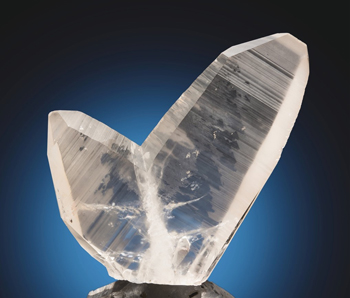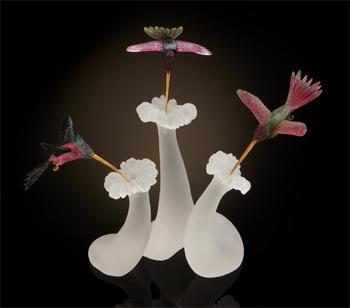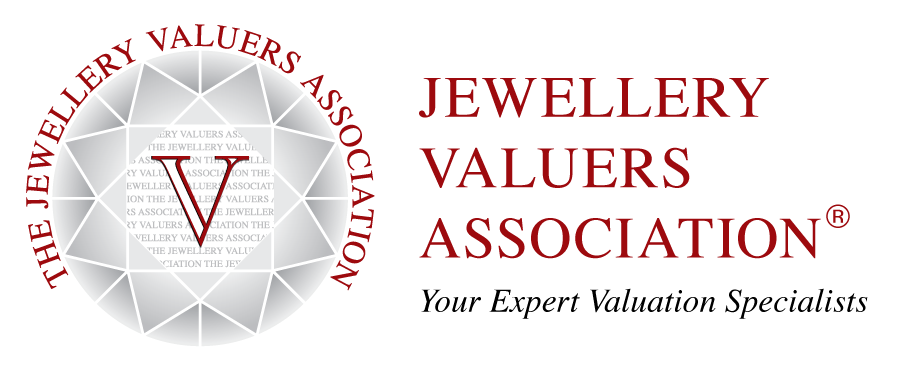Valuing Mineral & Gemstone Carvings with Dr. Çiğdem Lüle PhD, FGA, DGA, GIA GG, IMJVA
by Patricia Law FGA DGA FJVA FIRV
The Jewellery Valuers Association hosted a presentation by Çiğdem Lüle on Valuing Minerals & Gemstone Carvings. We were joined by members from the Scottish Gemmological Association; the National Council of Jewellery Valuers in Australia and the National Association of Jewelry Appraisers in the USA. Wednesday 13th January, 2021 - 8pm in the UK, which is 2pm in Chicago, and 6am in Brisbane (the following day) - names but a few of the times and places that people tuned in from. All of us eagerly waiting to hear Çiğdem, many of us having been lucky enough to have been entertained and educated by her before.
This presentation, on a personal note, opened my eyes to and piqued my awareness of a whole new collecting world and future interest. As a jewellery valuer I have mainly concentrated on polished and facetted gems - whether they be the main focus or part of the show, but always set into jewels that can be worn. This presentation reminded us to go back, to look and appreciate the qualities and beauty of the original minerals themselves.
The market for minerals has been marked in the last twenty years with ever increasing values for interesting specimens - mineral fairs thriving and auction prices rising. The quality traits that Çiğdem highlighted are:- Aesthetics; Structure/Form; Colour; Transparency; Condition – rubbed or chipped edges; Size – often the value increases considerably due to the size of the crystal and provenance. We were shown striking Japan Law twinned crystals of quartz from Arkansas, USA and Minas Gerais, Brazil where the values reflected the size of each crystal. A Beryl (var. Heliodor) crystal at 25.2 x 6.0 x 5.1 cm – that is so valuable that it is ‘Price on Application’ only. One of my favourites was a smaller, and more affordable piece
A Cobalto-calcite crystal from the Kolwezi Mine, Katanga, Democratic Republic of Congo. The bright, pink rose coloured, pyramid shaped crystal had a good translucency with what appeared to be magically floating dark inclusions. It seemed to answer for me all the things on the quality traits which Çiğdem gave, but before any thoughts of my buying the piece was seriously considered, she added some warnings of other considerations such as repairs, treatments and fakes. Another crystal which she showed appeared to emerge from its matrix, it was a piece of elbaite tourmaline, the blue/black- green of the tourmaline contrasting against a haze of pure white matrix. As you can probably tell my interest is definitely piqued.

35x26x5 cm.
Courtesy of Heritage Auctions
Collecting minerals and mineral carvings is perhaps innate in our human behaviour and Çiğdem’ s talk had begun with an image of The Venus of Hohle Fels figurine. An Upper Palaeolithic sculpture of a woman which dates back to approximately 35,000 – 40,000 years ago. Yet it was with the creations of more recent mineral carvers that she concentrated, highlighting skills that can be traced back to the traditions and techniques honed in Idar-Oberstein, in the South West of Germany. The quality traits of gemstone carvings for us to consider:- The Artist – a signature on the work making a significant difference to the value; Starting Material; Components; Completeness and Provenance. One piece that perhaps included all these factors was a carved Agate Lily by Gerd Dreher – a renowned gemstone carver with his family roots going back to Idar-Oberstein. He used Brazilian agate which is a sympathetic material to carve and shows his skill with its curled petals and the way he uses the stones natural patterns to the enhance the naturalistic appearance of the flower. It has been enhanced with 18ct gold and enamel work. Other pieces included a tourmaline hummingbird carving ‘California Kolibri’ by Gerhard Becker and some twisting and turning free form polished carvings by Meg Berry in bloodshot iolite, aquamarine and pyrope. All of these pieces highlighting Çiğdem’s point to appreciate the three-dimensionality of a carving.

by Gerhard Becker.
20.5x15.4x12.8cm.
Courtesy of Bonhams.
One memorable carved sculpture called ‘Bahia’, named for its country of origin, is composed of three pieces cut from a single crystal of Brazilian rutilated quartz arranged to show off the sunburst rutile inclusions within the stone’s natural clarity and transparency. As it weighs nearly one million carats it must be incredibly eye catching and dramatic. It is also ‘playfully’ described as ‘the world’s largest pendant’ – so maybe there is a piece of jewellery for me to value after all.
About our Presenter:
Dr. Çiğdem Lüle is a mineralogist and an award winning gemmologist. Her scientific background, gem trade and market experience in Turkey, United Kingdom and the United States since 1997 form the basis for the broad range of services provided to clients. Her company Kybele LLC provides independent mineral, gem and jewelry appraisals, individually tailored gemmological education, also supports archaeogemological research. She is also an International Member of the Jewellery Valuers Association.
About the Author:
Patricia Law, FGA, DGA, FJVA, FIRV began her career at Phillips Auctioneers in Bond Street, London in 1985, subsequently Bonhams. Having spent 30 years in the auction world she established her own Independent Jewellery business providing valuations for Insurance, Inheritance Tax and Market Sales. Whilst maintaining her links in the auction world by consulting for several leading auction houses, she is also an accredited lecturer for the Arts Society.
